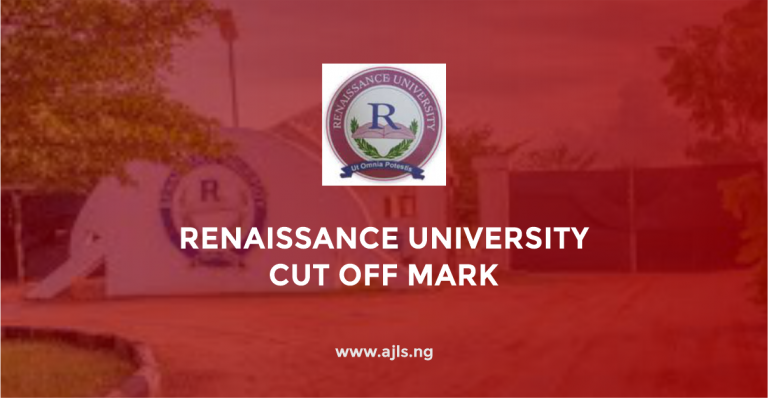UNIZIK Cut Off Mark for Admission 2025/2026

This is to officially inform all prospective candidates of Nnamdi Azikiwe University (UNIZIK), Awka, that the school management has officially published a new UNIZIK Cut Off Mark for Admission into the 2025/2026 academic year.
One of the major criteria for applying for this UNIZIK admission and passing the UNIZIK post-UTME screening is that you must meet the expected Nnamdi Azikiwe University Cut-off marks. To be eligible for your preferred course of study, you must achieve this UTME score or better. If your score falls below this threshold, your application may be automatically rejected, and you might not be able to proceed further with the admission process.
Hoping to gain admission into UNIZIK? then you must understand the required Nnamdi Azikiwe University cut-off mark for admission into the 2025/2026 academic year. This page is right here for you. We will guide you through understanding the general UNIZIK Cut Off Mark for Admission into the 2025/2026 academic session, the UNIZIK Cut off Mark across all courses and programs, and a lot more you might need to know about the UNIZIK Post UTME Screening exercise for 2025/2026 academic session.
UNIZIK Cut-Off Mark for 2025/2026
A cut-off mark is the minimum score a candidate must attain in the Unified Tertiary Matriculation Examination (UTME) to be eligible for admission into a particular institution or program. It serves as a benchmark for selecting candidates and varies by university, faculty, and course of study.
For the 2025/2026 academic session, the general cut-off mark set by Nnamdi Azikiwe University (UNIZIK) is 160. This means that candidates who scored 160 and above in their UTME are eligible to apply for admission into the university. However, meeting this general cut-off mark for UNIZIK does not guarantee admission, as each department has its specific cut-off mark, which is often higher depending on the competitiveness of the course.
UNIZIK Departmental Cut-Off Marks
Departmental cut-off marks are determined by individual faculties and departments based on the number of available slots, the performance of applicants, and the popularity of the course. Below is an outline of some indicative cut-off marks for popular programs at UNIZIK:
Faculty of Agriculture
- Agriculture: 184
- Food Science and Technology: 213.5
- Forestry and Wildlife: 187.5
Faculty of Arts
- English Language and Literature: 245.5
- History: 223.5
- Linguistics: 215.5
- Modern and European Languages: 203
- Music: 188
- Philosophy: 209
- Religious and Human Relations: 184
- Theatre Arts: 225
Faculty of Basic Medical Sciences
- Anatomy: 202
- Physiology: 217.5
Faculty of BioSciences
- Applied Biochemistry: 217.5
- Applied Microbiology and Brewing: 216.5
- Biological Sciences: 202.5
- Botany: 210
- Parasitology and Entomology: 202.5
- Zoology: 204.5
Faculty of Education
- Adult Education: 192
- Business Education: 183.5
- Early Childhood and Primary Education: 201
- Education and Computer Science: 189.5
- Education and Economics: 202
- Education and Mathematics: 194.5
- Education and Religious Studies: 233
- Education and Biology: 215.5
- Education and Chemistry: 203.5
- Education and English Language: 233.5
- Education and French: 229
- Education and Igbo: 209.5
- Education and Integrated Science: 198
- Education and Political Science: 206
- Educational Foundations: 210.5
- Educational Management and Policy: 205.5
- Electrical/Electronics Education: 172.5
- Guidance and Counselling: 209
- Health Education: 183
- Human Kinetics: 186
- Library and Information Management: 199.5
- Physical and Health Education: 182
- Physical Education: 183
- Science Education: 188
- Technical Education: 171.5
Faculty of Engineering
- Agricultural and Bioresources Engineering: 182
- Chemical Engineering: 224
- Civil Engineering: 212.5
- Electrical Engineering: 212.5
- Electronics and Computer Engineering: 237.5
- Industrial Production Engineering: 194
- Mechanical Engineering: 219
- Metallurgical and Materials Engineering: 192
- Polymer and Textile Technology: 186
Faculty of Environmental Sciences
- Architecture: 202
- Building: 160.5
- Environmental Management: 160
- Estate Management: 170.5
- Fine/Applied Arts: 175.5
- Geography and Meteorology: 180
- Quantity Surveying: 168.5
- Surveying and Geo-informatics: 178.5
Faculty of Health Sciences and Technology
- Environmental Health Science: 230
- Medical Laboratory Science: 261
- Medical Rehabilitation: 250
- Nursing/Nursing Science: 276
- Radiography: 259.5
Faculty of Law
- Civil Law: 271
Faculty of Management Sciences
- Accountancy/Accounting: 244
- Banking and Finance: 211.5
- Business Administration: 219.5
- Cooperative Economics and Management: 206
- Entrepreneurship: 205.5
- Marketing: 208
- Public Administration: 202.5
Faculty of Medicine
- Medicine and Surgery: 310.5
Faculty of Pharmacy
- Pharmacy: 290
Faculty of Physical Sciences
- Chemistry: 179.5
- Computer Science: 227.5
- Geological Sciences: 187.5
- Geophysics: 168
- Mathematics: 203
- Physics/Industrial Physics: 168.5
- Pure and Industrial Chemistry: 169.5
- Statistics: 165
Faculty of Social Sciences
- Economics: 229.5
- Mass Communication: 252.5
- Political Science: 228.5
- Psychology: 203
- Sociology: 216
This detailed guide provides clarity on the required cut-off marks for each department, allowing prospective candidates to plan effectively.
It is essential to note that these figures are subject to change and should be used as a guideline. Official departmental cut-off marks will be released after the post-UTME screening.
How UNIZIK Determines Cut-Off Marks
UNIZIK employs a holistic approach to determine its cut-off marks. Several factors come into play, including:
- The overall performance of candidates in the UTME influences the cut-off marks. High general performance often leads to higher cut-off marks.
- Programs with a high number of applicants usually have higher cut-off marks.
- Each department has a limited number of slots, which affects the competitiveness of the course.
- UNIZIK considers state indigenes within its catchment area for certain courses, which may slightly lower the cut-off mark for those candidates.
Post-UTME Screening
After meeting the general or departmental cut-off mark, candidates must participate in the UNIZIK Post-UTME screening. This process evaluates candidates’ aptitude and readiness for university education. The post-UTME score, combined with the UTME score, determines a candidate’s aggregate score, which is used for final admission decisions.
How to Calculate Aggregate Score
UNIZIK uses a weighted scoring system to calculate the aggregate score:
- UTME Score: 50%
- Post-UTME Score: 50%
For example, if a candidate scores 260 in UTME and 70 in Post-UTME, the aggregate score is calculated as follows:
- UTME Contribution: (260/400) x 50 = 32.5
- Post-UTME Contribution: (70/100) x 50 = 35
- Total Aggregate Score: 32.5 + 35 = 67.5
Candidates are then ranked based on their aggregate scores, with admission offered to those who meet or exceed the departmental cut-off.
Tips for Aspiring Candidates
- Strive to score well above the general cut-off mark to increase your chances of gaining admission, especially for competitive courses.
- Dedicate time to study and practice for the post-UTME screening. Focus on subjects related to your chosen course.
- Understand the specific requirements and cut-off marks for your desired course and work towards meeting them.
- Regularly check the UNIZIK official website and JAMB portal for updates on admission processes and cut-off marks.
- Consider applying for less competitive courses or institutions as a safety net.
Knowing the UNIZIK cut-off mark is essential for any student hoping to study there. This score is the minimum you need to be considered for admission. Use this information to plan your studies effectively and submit a strong application. Aim to surpass the minimum requirements, stay updated on the latest information, and approach the admission process with confidence and dedication. We wish all future UNIZIK students success in their academic pursuits!





